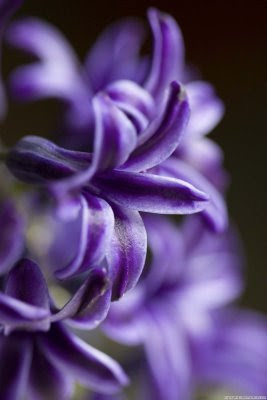Language of Flowers

Today we have the extreme pleasure of a guest post with author, Barbara Taylor Sissel. Her new novel, The Ninth Step is a wonderfully crafted tale of love, deception, fear, mystery and redemption. Intermingled with the knowledge of the Language of Flowers, The Ninth Step is steps us back in time, while remaining completely relevant to today.
So, without further ado, let us hear from Barbara Taylor Sissel!
~~~~~
Thanks so much, Linda, for hosting me on your lovely blog, today. Coming here is like landing in a peaceful space. I so enjoy visiting and have hopes now of leaving something behind as tangible thanks for the enjoyment I’ve had.
Because it’s spring and because The Ninth Step incorporates it, we thought it would be appropriate to talk a bit about the Language of Flowers, a language that was created during the Victorian Era to express a variety of sentiments, not all of which are romantic. But, as I settled down to write, I started thinking about the ways in which certain elements come to be included in novels.
I know, I am often asked why I chose a particular setting or plot twist. It may sound disingenuous to say this, but I seldom feel as if I chose any of it. I have a central story idea, one that usually revolves around a family in jeopardy. Often a crime is involved. I’ll see that much unfold … the crime and the ticking away of the ordinary hours before the blade drops, before the meaning of “ordinary”, is forever altered for everyone involved and I, as the author, am left with: What happens now?
I admit, my novels are darker than some. They grapple with difficulties that tend toward the more calamitous events in life. The story lines test the limits, I think, of what is forgivable and what isn’t. I wonder, where is the line? Are there situations, acts, people that, regardless of circumstance, can never be considered worthy of understanding or compassion? It’s heavy stuff and I am always grateful to weave a lighter thread, an element of something beautiful, even joyful, into the story fabric.
So, I was happy about it when Livie in The Ninth Step—and again this may sound contrived—when she herself told me of her interest in the language of flowers, that she knew it well enough to teach it to someone else. For her that someone was Cotton, the man whom she thought was the love of her life, but who turned out to be heartbreakingly human, instead, or a selfish coward, depending on how you view him. In any case, Livie’s interest sent me on a journey of discovery.
I have gardened most of my life, but other than the gift of a small, illustrated book my sister once gave me on the language of flowers, I knew nothing about it. However, it did sound romantic and I immediately imagined I would include all my favorites. For instance, when Livie finds the bouquet of irises on her front porch swing, I initially planned she would find hydrangeas, perhaps mixed with clematis. Well, guess what? Hydrangeas—to me the most romantic looking flower of them all, those colors, the lushness of their blooms—in flower language, they symbolize heartlessness. They say, You are cold. So much for romance! Clematis stands for mental beauty, not exactly speaking to the sort of affection I hoped for. In fact, I was amazed when I began researching flower meanings and symbols at just how lacking in affection and sentimentality the language is. Like my fiction, a lot of it conveys a darker meaning.
I love Foxgloves, but didn’t use them. They mean insincerity. Lavender means distrust, Lobelia, malevolence, Begonia, dark thoughts, Geranium, melancholy. When I went looking for something wonderful like white roses, say, to signify motherhood, I found they translate to: I am worthy of you. I didn’t want to imagine what would happen if Cotton gifted anyone in The Ninth Step with those - not after what he did. I went looking for a floral symbol for the maternal and found it was moss. Moss? Where did they come up with that? Or this one, Locust Tree, green: Affection beyond the grave. Or, how about Lady Slipper, another of my favorites, a gift of them means capricious beauty.
So, all of this in a very roundabout way brings me to an exciting piece of news I want to share, that I recently signed to publish two books with MIRA. The first, Evidence of Life, will come out in April of 2013 and the second in March of 2014. I am thrilled. Of course, I wanted to express my gratitude to my wonderful agent, Barbara Poelle. I looked it up and found a bouquet of full-bloom roses is significant of gratitude and so I sent her exactly that. I could have sent only pale pink roses or wood sorrel to convey joy, or, gooseberries for anticipation. The meanings depend on the source you consult.
I hope you will come with me on this journey. I plan to blog about it here from time to time. Until then, imagine yellow lilies. They mean, I am walking on air and cyclamen say, goodbye.
~~~~~~~



Comments
Beth :-)